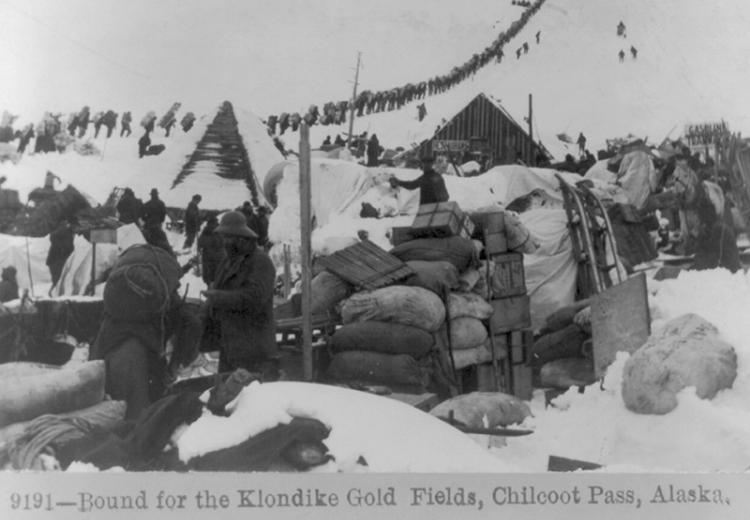Knowledge or Instinct? Jack London's “To Build a Fire”

Bound for the Klondike gold fields. Chilkoot Pass, Alaska.
The man "was a newcomer in the land, a chechaquo, and this was his first winter." Jack London's startling, and even cold, observation of a man's foolish confidence in the face of nature's power forms the story "To Build a Fire." As the man and his animal companion take a less-traveled path to their Yukon camp, they step into a tale of wilderness survival and dire circumstances. London's stark, distanced portrayal is an excellent example of American literary naturalism. In this lesson, students will closely read "To Build a Fire," understand the use of narrative point of view, and debate the distinction between knowledge and instinct. Students can then learn about the elements of literary naturalism and how they relate to London's work.
Guiding Questions
What is the relationship of man and nature in London's short story "To Build a Fire"?
What is the difference between knowledge and instinct?
Learning Objectives
Analyze the relationship of man and nature in "To Build a Fire"
Evaluate London's juxtaposition of knowledge and instinct.
Articulate the significance of using a third person, omniscient point of view within the narrative.
